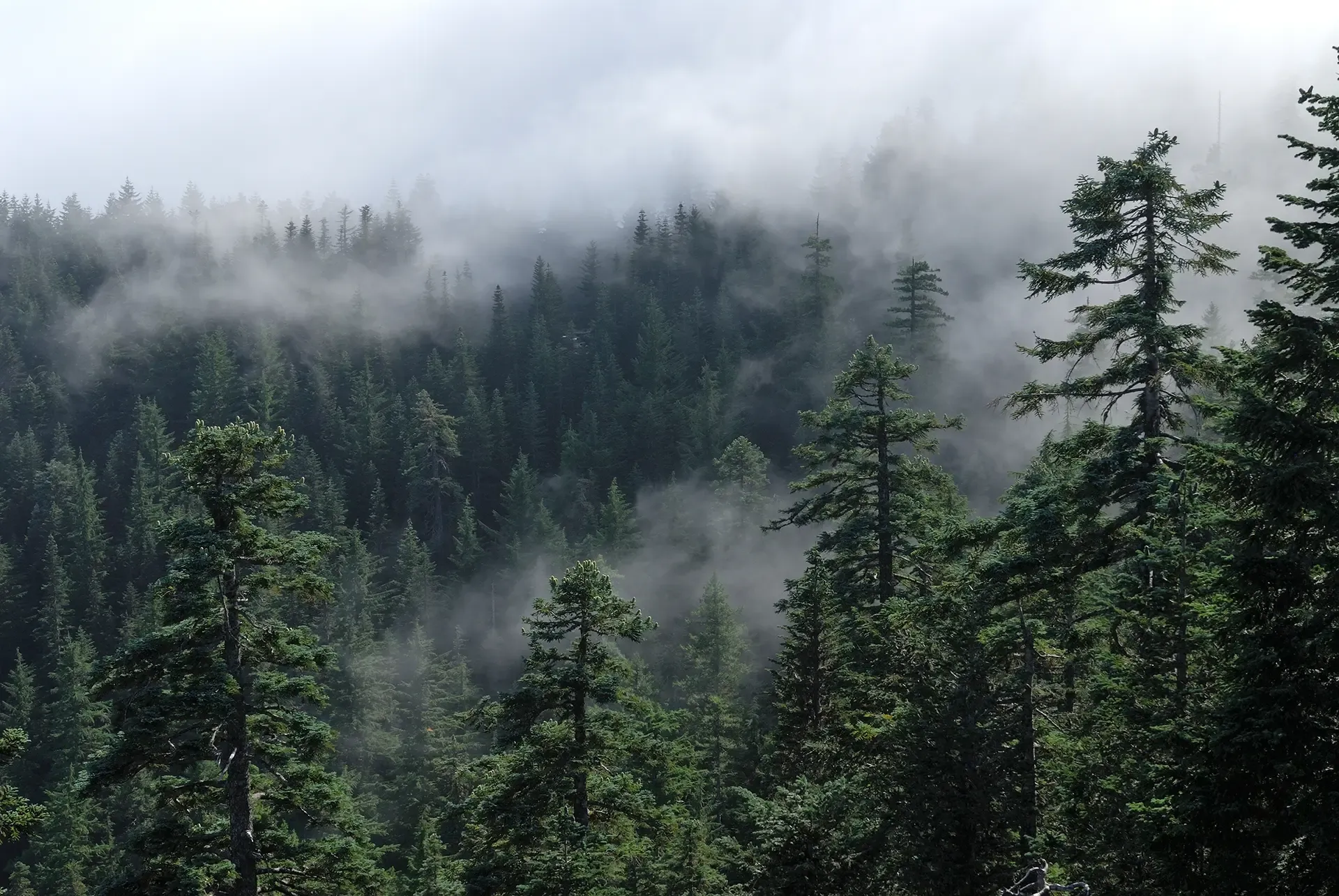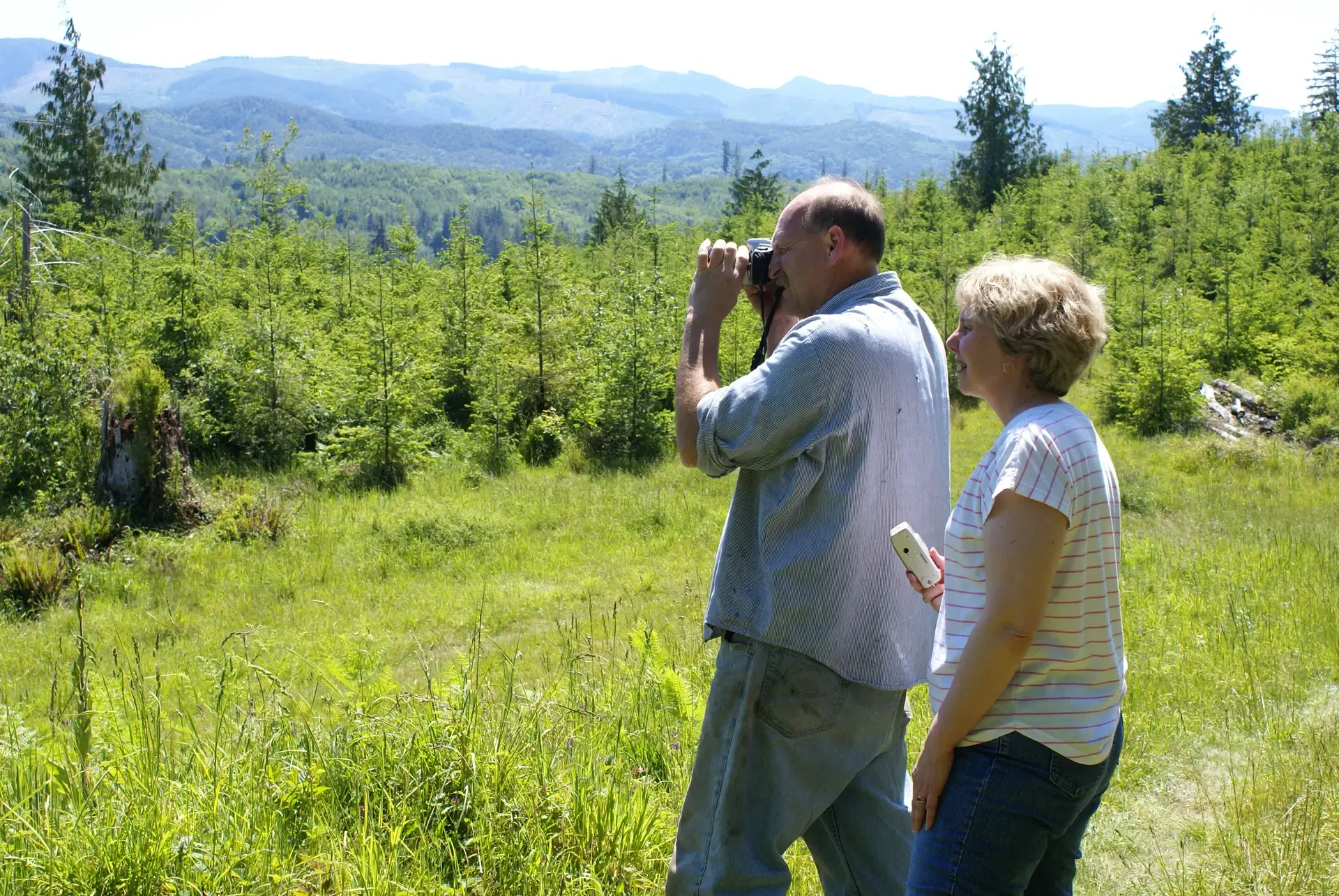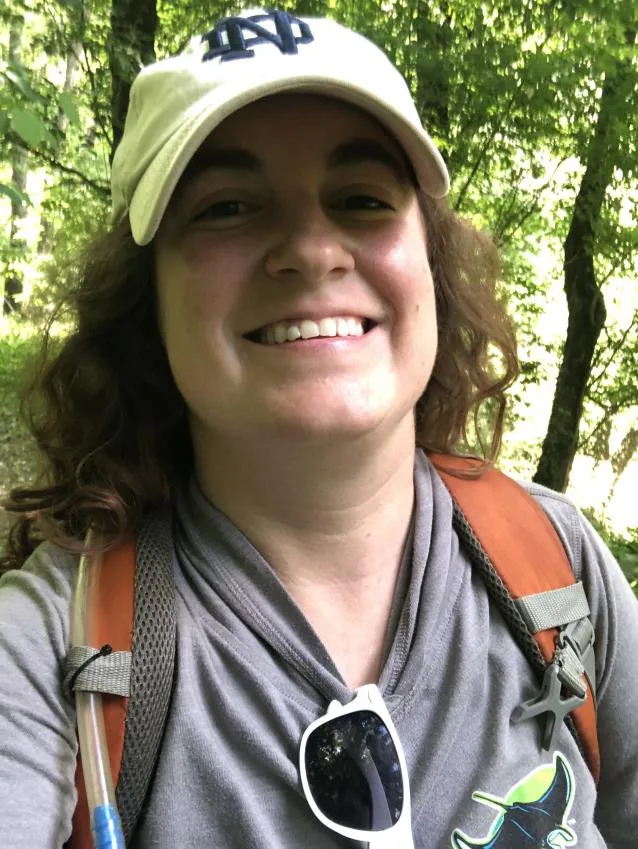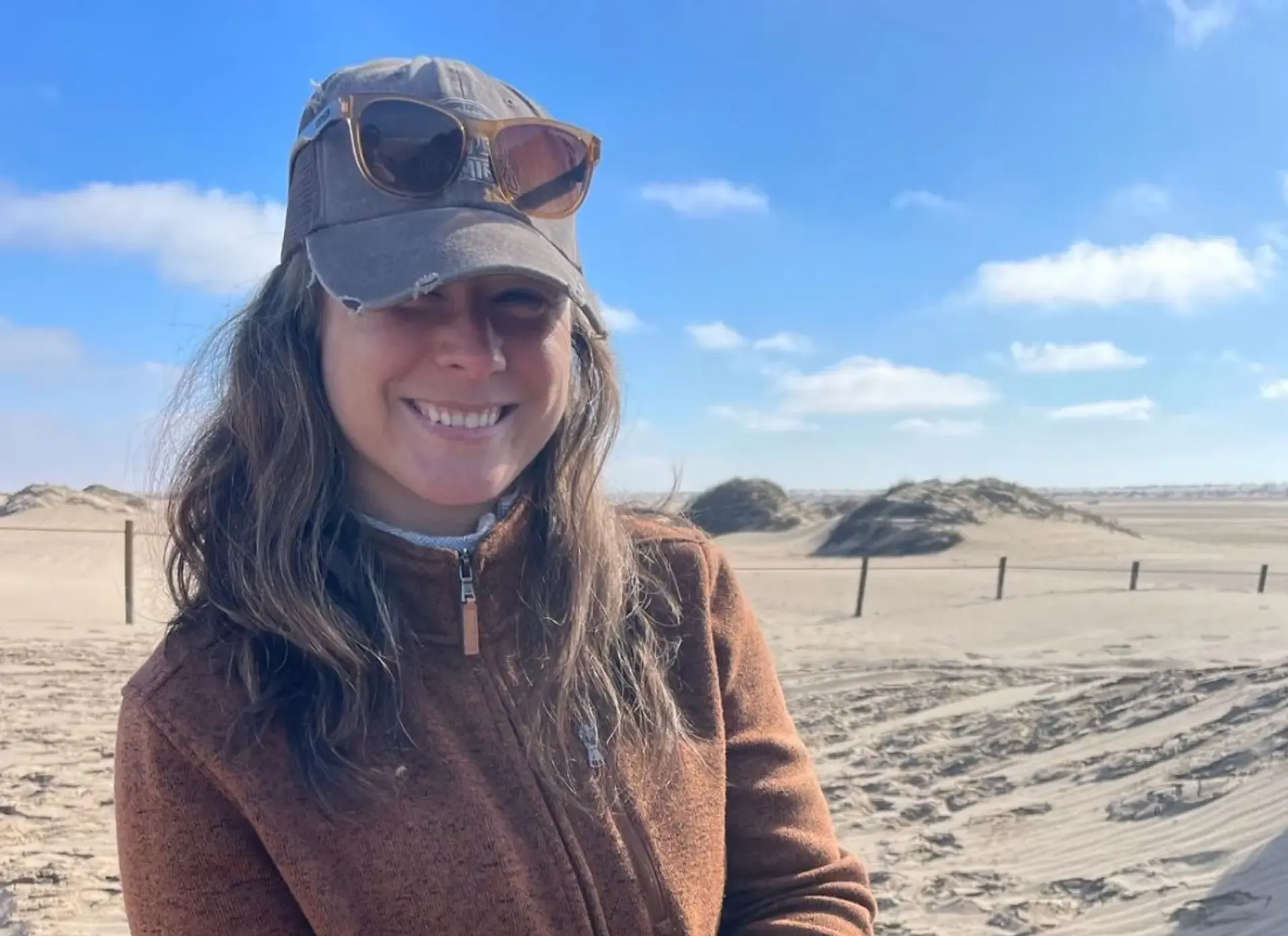Overcoming the Capacity Challenge in the Western U.S.

Professional foresters provide critical support to landowners to maintain the health of their forested land. They look holistically at a property to assess the needs of a particular landscape in the context of the landowners’ goals and objectives, identify appropriate actions to take, and write management plans. Foresters also help landowners navigate often complex financial assistance programs to help offset the expensive out-of-pocket costs associated with forest management treatments.
These technical and advisory roles that foresters fulfill are particularly critical in Western U.S. landscapes which are vast and diverse—from steep slopes to lowlands and foothills—and require unique expertise to help landowners better understand and manage wildfire risks.
Barriers to Working with Foresters
To keep forests healthy in the West, it is critical to engage more family forest landowners in proactive management of their land for wildfire. As AFF and partners work to increase the number of landowners interested in taking action to manage their land, one major barrier emerges: there are simply not enough foresters available to provide that essential technical assistance.
The forester capacity challenge is multifold. Across the West, state and federal agencies are experiencing increasingly tight budgets and variable year-over-year funding. These compounding issues have led to agency offices with too few foresters on staff to serve large, rural landscapes. In many states, those agency foresters also have to manage overlapping duties – like in Oregon, where a large portion of Oregon Department of Forestry (ODF) foresters have firefighting responsibilities during fire season, on top of “off-season” duties working with landowners to reduce risk. Further complicating the capacity issue, there are fewer graduates entering the forestry sector each year, in part due to declining timber markets across western states.

Given the scale of the West’s fire crisis and the increasing demand for forestry expertise, we need to have more ‘boots on the ground’ to help landowners manage their risk” says Natalie Omundson, Western Conservation Manager for the American Forest Foundation. This multi-layered challenge will require partnerships across sectors and scales focused specifically on building forester capacity.
How the American Forest Foundation is Helping Build Local Capacity
In 2019, AFF joined forces with the Natural Resources Conservation Service (NRCS) on a $4.6 million pilot program to build forester capacity across priority landscapes in California, Colorado, Montana and Oregon. Through the program, AFF works directly with state agency and non-profit partners to both create new jobs to administer technical assistance to private forest landowners and provide dedicated funding for agency foresters amid state cutbacks. Through this dedicated capacity model, the program is able to increase delivery of long-term, site-specific management plans that are a prerequisite for unlocking the financial assistance landowners need to conduct fire risk reduction treatments on their land.
In addition to simply increasing the number of foresters in priority landscapes, partners are also testing models for how to diversify the pool of forestry professionals. For example, in a subset of the program, partners in northeastern Oregon have combined increased ODF forester capacity with dedicated private sector consulting forester capacity. This model – organized and coordinated by partners at Wallowa Resources and Oregon State University (OSU) Extension – also includes a workforce development component that supports job growth in rural economies, through which partners have hired and trained a cadre of new forest technicians to work alongside the program’s dedicated consulting foresters.
This northeast Oregon model has led to two key learnings for program partners. First, in landscapes like Oregon where state agency foresters still need to devote their summers to fire duty, having a diversified pool of foresters is crucial for increasing the speed and scale of active forest management. In cases where ODF foresters are unable to provide assistance to a landowner, partners can redirect that landowner to another local consulting forester. Second, providing technical assistance to landowners can be a time-intensive process with the relative complexity of the plan increasing with property size. By pairing foresters with forest technicians, the workload becomes more manageable, increasing the speed of management plan delivery for landowners. Based on the initial successes of this model, AFF is looking at opportunities to develop similar diversified forester workforce options in other priority landscapes, such as southwestern Colorado.
Overall, the capacity-building pilot program has been highly successful in the initial priority landscapes. More than 160 landowners, collectively owning over 58,000 acres, have received management plans through this program. Without the program, its likely these plans either would not have been written in the first place or it would have taken years longer to complete.
AFF has also documented increased rates of financial assistance applications. In Oregon, for example, 84% of landowners that have received management plans through this program have also completed a cost-share application through the NRCS Environmental Quality Incentives Program (EQIP), the federal government’s largest conservation cost-share program. Furthermore, the program has enhanced cross-agency relationships in many landscapes, improving strategic coordination on how to prioritize limited funding to get the greatest return on investment.
By supplying landowners with management plans necessary to access financial assistance programs, AFF hopes that more landowners will be able to complete treatment activities to reduce fire risk on private lands. “Our big picture goal here is to increase active forest management in priority landscapes so that we can reduce the likelihood of devastating fires. And this program offers a model for how we can overcome a key roadblock for scaling that on-the-ground impact goal,” Omundson notes.
“Looking forward we’re discussing opportunities with state leaders to expand funding for this program – both to increase capacity in the key areas we’re already working in as well as to include additional key landscapes suffering from the same challenge,” Omundson concluded.
Related Articles

July 1, 2025
Forester Spotlight: Sarah Cawood
We’re excited to highlight Sarah Cawood, a dedicated forester with the Family Forest Carbon Program (FFCP) who brings enthusiasm, experience, and a strong commitment to conservation to her work.

April 7, 2025
Forester Spotlight: Mac MacKenzie
We’re excited to spotlight Mac MacKenzie, a dedicated forester with the Family Forest Carbon Program (FFCP) who is passionate about sustainable forestry and conservation.

August 13, 2024
Forester Spotlight: Olivia Thomas
Olivia lives in Kentucky where she enjoys helping landowners in the Appalachian region develop and implement sustainable forest management plans and steward their forests.